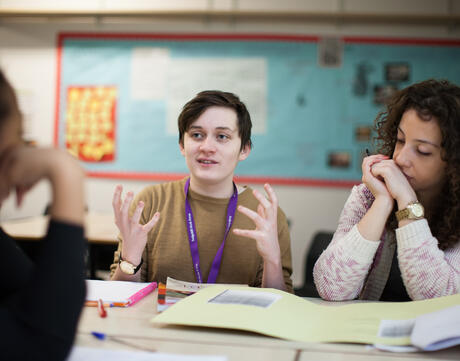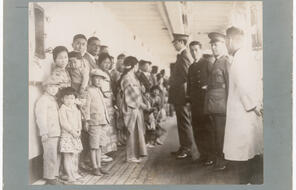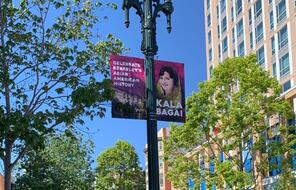The global Muslim community is diverse and broad: Islam has been around for over 1,400 years and a quarter of the global population is Muslim.
There are Muslims living in countries all over the world,
who have different heritages, identities, skin colour, and professions, as well as different relationships to religion. Yet, despite this diversity, Muslims are often treated as a homogenous and culturally inferior block, and are discriminated against, ostracised and attacked, just for being Muslim (those perceived to be Muslim are also on the receiving end of oppressive treatment). Muslims also regularly have their achievements, and their influence on European thought and culture overlooked. Pioneering Muslim figures translated classical texts rendering them accessible to Europeans;
invented algebra; founded the world’s first degree-granting university; created the first flying contraption; and produced the first surgical guidebooks, which were in use for 500 years in Europe.
Yet these contributions, among many others, are often ignored completely or pushed to the margins of history, with Muslims being depicted as a separate and culturally incompatible ‘other’.
This hatred of and hostility towards Muslims, which in the present day is known as Islamophobia, has evolved across the centuries, retaining relevance in the face of shifting world views, geopolitics, anxieties and social customs. At its root, Islamophobia relies on the idea that certain physical, intellectual, moral and cultural differences exist between Muslims and those living in the West,
and that these differences are immutable and threaten the identity, social cohesion and national security of Western liberal democracies. These negative perceptions of Muslims are borne both of the racialisation of Muslims, and of religious ignorance and prejudice, and are the legacies of the Crusades and colonialism, which asserted the superiority of white, Christian Europeans over those with different skin colours, cultures and religions.
In the past decade, there has been a rise in the level of Islamophobic incidents recorded in the UK
and across the world.
These have included state-led acts of violence – as is seen by the treatment of the Uyghurs in China, the Rohingya in Myanmar and Muslims in India – and street-level abuse,
the desecration of graves
and attacks on Muslim buildings.
This increase in Islamophobia is due to a range of factors: the rise of populism, nationalism, anti-immigrant policies,
the far-right
and discriminatory rhetoric by politicians;
the widespread use of the Internet and social media which allow Islamophobes to expose large audiences to conspiracy theories scapegoating Muslims;
the media
and entertainment industry’s
long-standing, demonising depiction of Muslims; and spikes in conflict between Israel and Palestine.
The securitisation of Islam,
which has led to discriminatory counter-terrorism policies, further fans the flames of Islamophobia by suggesting that Muslims are to be feared.
These manifestations of Islamophobia, along with others, are rooted in the idea of a homogenous Muslim ‘other’ whose customs and values are incompatible with Western society. In the UK, one of the consequences of this widespread ‘othering’ is that Muslims feel unsafe and ostracised in their own home country, and are attacked just for being Muslim.
Islamophobia can be a difficult topic to discuss in the classroom: it is hugely complex, given its connection to religious hatred and racism, and has such a long history that Islamophobic attitudes have shaped modern perceptions about belonging in ways that are difficult to grasp. Islamophobia is acts of discrimination and hatred towards Muslims rooted in racism, but it is also religious prejudice. These two sides to Islamophobia reinforce each other, and shape the way that people respond to Muslims.
Helping students grasp the complexities of Islamophobia, its history and how it exists in the present day is vital if it is to be challenged. Not challenging Islamophobia has disastrous impacts not only for Muslims, who risk being attacked, but also for other marginalised groups as it normalises oppression. Left unchecked, Islamophobia can also risk the health of and cohesion of society.
As highlighted in the All Party Parliamentary Group on British Muslims’ report Islamophobia Defined,
It is not just British Muslims who are impacted by Islamophobia. It is British society at large who, by virtue of normalised prejudice against Muslim beliefs and practice, come to imbibe a panoply of falsehoods or misrepresentations and, consequentially, discriminatory outlooks to the detriment of social harmony and social inclusion.
Use this unit to help students understand what Islamophobia is, how it manifests in contemporary society and its impact, and explore their role in standing up against this form of bigotry. The lessons will guide students through these fundamental questions:
- What is Islamophobia, how does it manifest in the world today and what is its impact?
- What is the history of Islamophobia and Islamophobic tropes, and how have they evolved to retain relevance in the present day?
- How is Islamophobia spread in the media and in the entertainment industry?
- What is gendered Islamophobia and how does it impact the treatment of Muslim women?
- How can we stand up against contemporary Islamophobia?
We recommend that, if possible, you teach all of the lessons in the designated order. However, if you do not have time to do so, we have outlined approaches that you can take below.




















